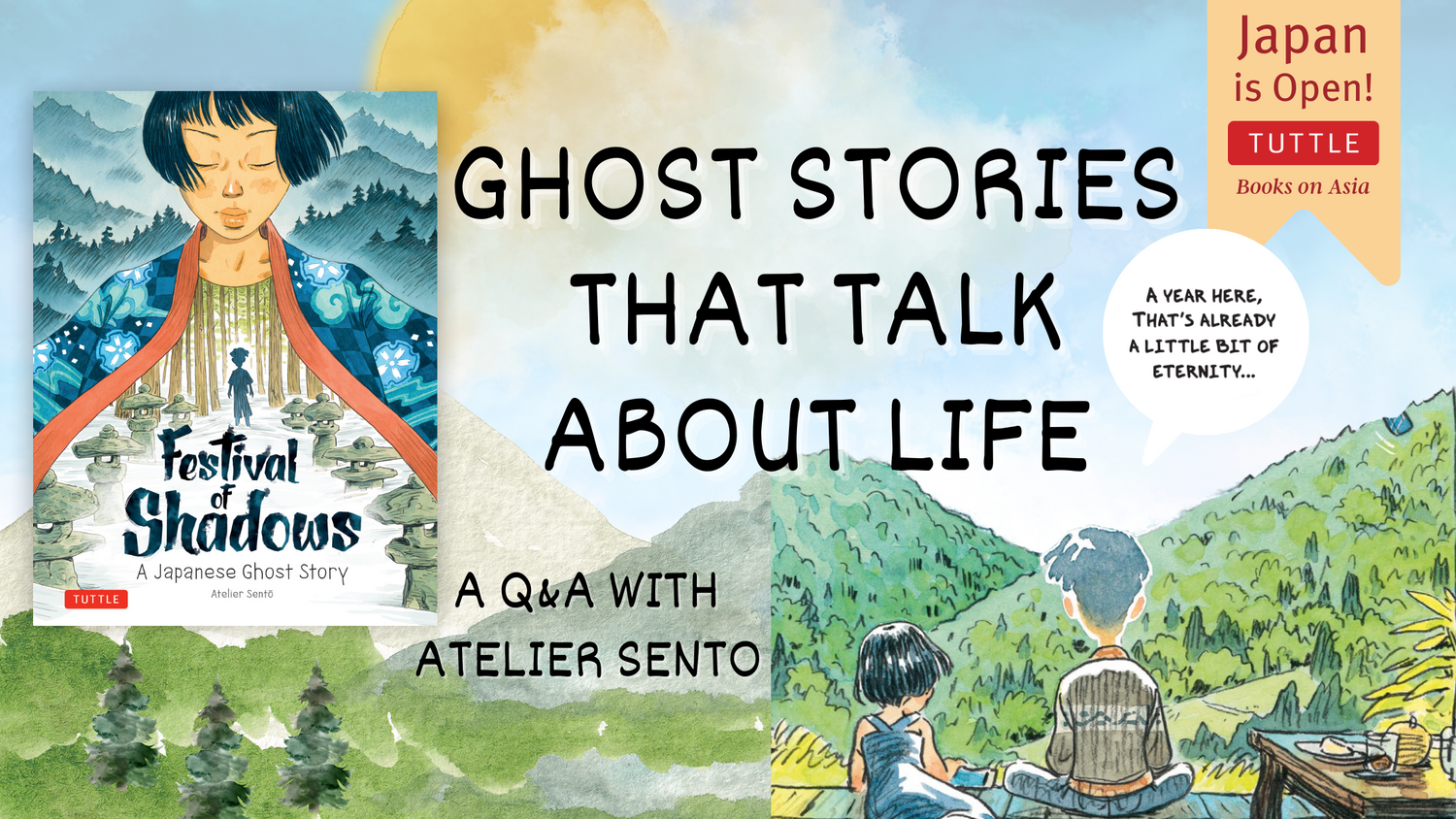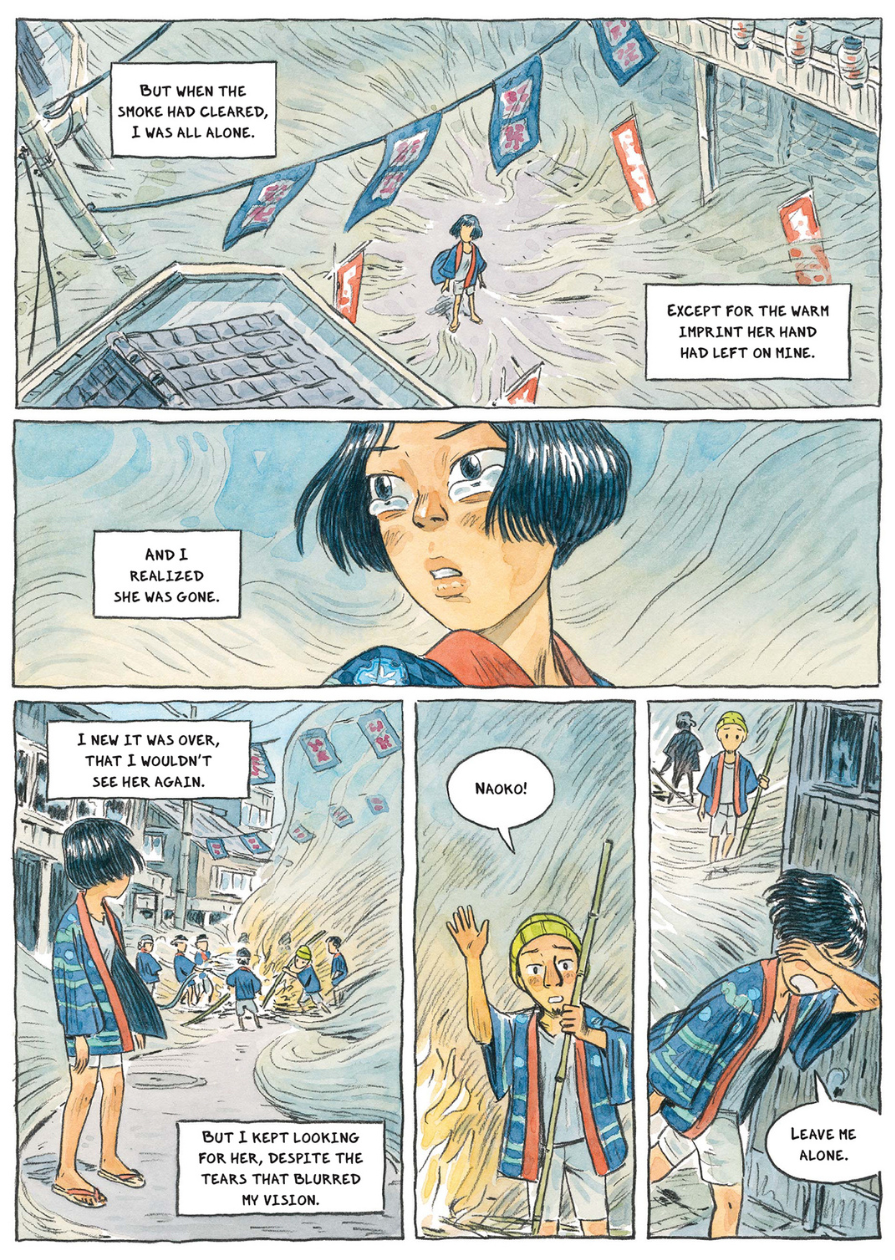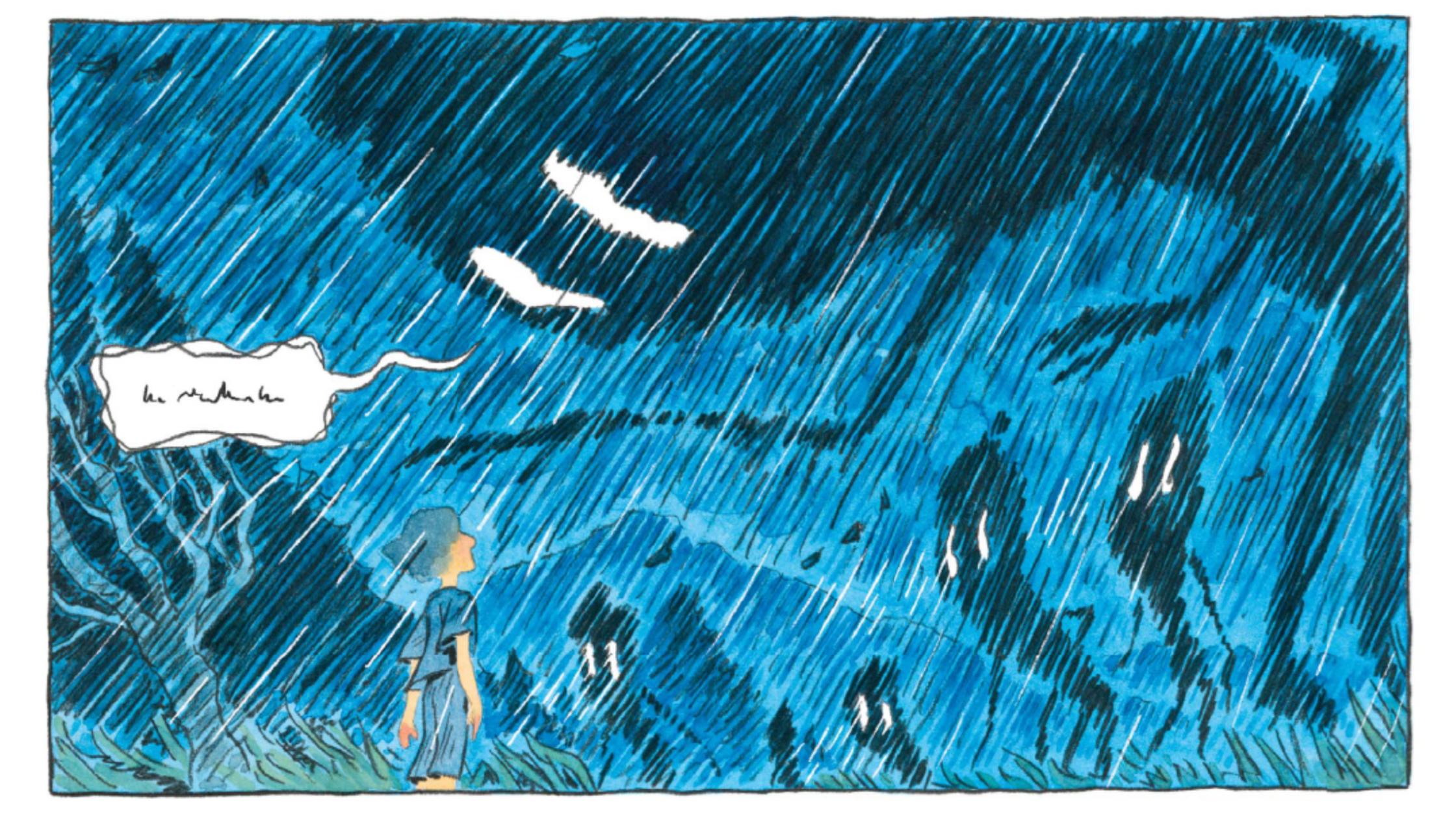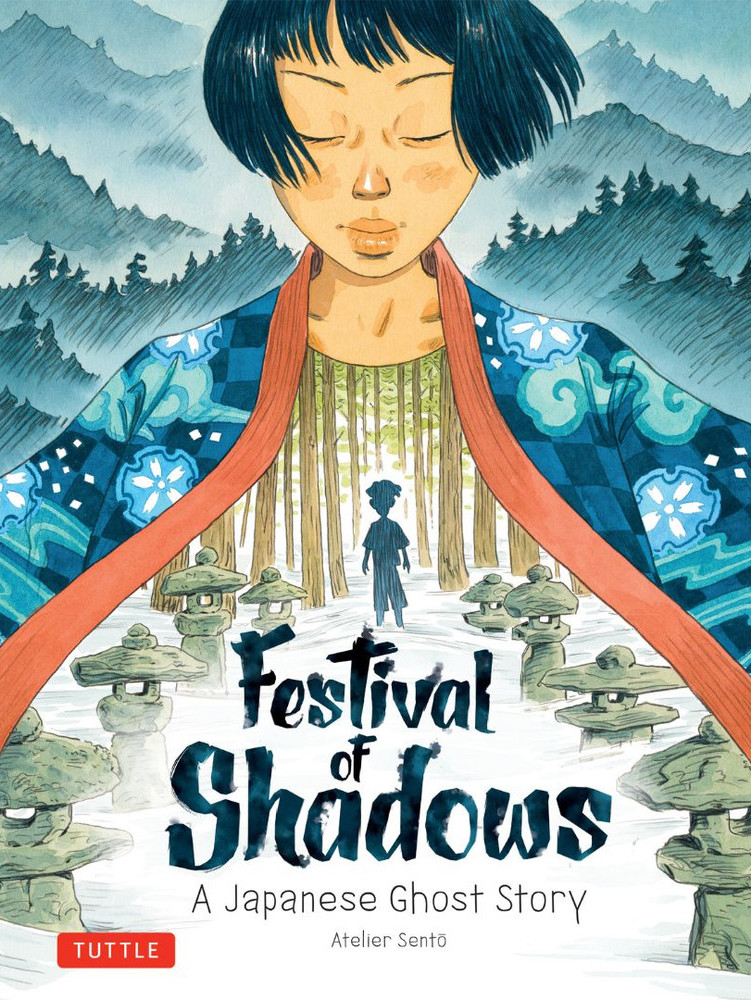Today we are speaking with Cecile Brun and Olivier Pichard, the award winning creative team known as Atelier Sento, and the authors of the new Tuttle graphic novel, Festival of Shadows. Atelier Sento was born out of Cecile and Olivier's eye-opening travels in Japan, and this book is a beautiful expression of their love for the people and places they've encountered. You can purchase it wherever fine books are sold, or right here.
Congrats on the release of your new book, Festival of Shadows! Before we dive into all the book questions, we noticed that you've been traveling in Japan. And here at Tuttle, we are very excited that Japan is back open to travelers. What has been your favorite part of the trip so far? And what advice would you give to first time visitors?
Thank you, we are thrilled that Festival of Shadows is now available internationally. We hope that the story will reach readers from different countries. We were happy to return to Japan after several years. The most important thing for us was to see our friends and Cecile's brother (who lives in Japan and whom we had not seen since the borders were closed). After 14 years of exploration, we would advise first-time visitors not to rush to the most well-known and touristy places, but rather to venture into uncrowded alleys, get off the beaten path and pay attention to details — because it is in everyday life that Japan's charm and mystery reside.

We absolutely love your artistic style, and that is fully on display in Festival of Shadows. Can you tell us a bit about your illustration process?
For Festival of Shadows, as for our previous graphic novel Onibi, we worked with pencil and watercolor. When we travel to Japan, we always bring a sketchbook and a box of watercolors to make sketches on location that we then use as a reference to create the sets for our comics. These are the same tools we used for Festival of Shadows. We divide the tasks at the beginning of the project: Olivier writes the script, Cecile draws the storyboard and the pencils, then Olivier does the inking and the colors. This close collaboration makes our personal styles merge into one: Atelier Sentô’s style!
The artwork in the book is so moving, raw, and full of emotion! What were your favorite sections, scenes, or characters to illustrate?
The story takes place over 4 different seasons, sometimes in the city, sometimes in the countryside. Some chapters are joyful, others melancholic, sometimes even dramatic. So there are very different atmospheres and we enjoyed drawing each of them. We felt like we were navigating between the fluctuating feelings of our main character Naoko. Throughout the story we became very attached to her because we got to know her in all her strength and her fragility. She is a young woman full of energy and very sensitive, in the midst of transition between adolescence and adulthood. She is a patchwork of our Japanese friends and we love her.
Let’s talk about the story a bit — a ghost story, as your subtitle explains. What drew you to the subject of ghosts, and what unique perspective or angle did you want to add to the ghost story genre with this book?
In Japan, there’s a summer ritual called “O bon” where people light lanterns to guide the souls of the dead who come to visit. Since we like to mix reality and fiction in our books, we had the idea of a small village where the souls of the dead come back for real! We had several ghostly experiences in Japan (like visiting Osorezan, a dreadful mountain where people come to speak with their dead children), so we think this is the perfect place for that kind of story. It was also an opportunity for us to talk about serious topics (the weight of tradition, rural depopulation, etc.) and to delve deeply into Naoko’s feelings (who is still mourning heavy losses). In the end, creating a ghost story is probably one of the best ways to talk about life.
Your protagonist Naoko struggles between the boundaries of the spirit world and the physical world. Talk about how her character sets the trajectory of the book’s plot.
When Naoko was younger she had the dream of becoming a writer, but now she feels stuck in her little village. She’s struggling between her own dreams and the important task that was given to her: to guide the souls of the dead so they can find peace. When she encounters the new Shadow she’s supposed to care of, Naoko slowly understands that he might be her last chance to leave this village for good, and finally live her own life! When we created Naoko we wanted her to feel like a real person, so we got inspired by some of our female friends. In Japan it can be difficult to achieve your dreams, especially if you’re a woman. Naoko may not be as strong and determined as she wished she was, but we her story is moving and we wanted to share it with the readers.
As you mentioned, you've organized the book by seasons. What is the significance of that? And after visiting and studying in Japan, what are your favorite seasons there?
The seasons represent the different stages of life. In one year, nature follows a cycle of birth and death, which are the main themes of Festival of Shadows. When we lived in Niigata, in the Japanese countryside, we especially loved autumn, the only pleasant season in this region because winter is very harsh (snow for almost 6 months!), summer is terribly hot, and spring is rainy. But on our last trip to Tokyo, we discovered that winter can be a very beautiful season on the east coast of Japan with gentle sunny days, plum blossoms blooming, and wispy sunlight giving a dreamlike quality to the city.
The images of food were beautifully drawn and looked so appetizing! What role does food play in bringing the culture of Japan to life on the page?
When we lived in Niigata, food was at the center of our concerns! Winter being very hard and very long, our days consisted of long meals spent with our friends while watching the snow fall through the window. In the countryside, the dishes really follow the rhythm of the seasons, and a lot of discussions revolve around food. Everyone is looking forward to the arrival of sakura mochi in the spring, persimmon specialties in the fall, watermelons in the summer, and fondues in the winter. Not to mention the many TV shows showing stars eating and feasting while repeating "oishii" (delicious)!
One of the main characters, Yukito, is a talented artist, and we see his work throughout the story. How do your own experiences as artists come into play when creating and forming an artistic character?
Yukito, like Naoko, is inspired by people we know. When in Niigata, we had the opportunity to take courses in Japanese painting, Nihonga. This allowed us to discover a fascinating technique that requires diligent practice and a perfect knowledge of pigments. The very name of the character, Yukito Kondo, is a tribute to our Japanese painting master, Yukio Kondo. The paintings visible in the comic’s backgrounds are inspired by the paintings of Saito Kazu whose work we admire.
We really appreciate this conversation and your thoughtful answers about Festival of Shadows! Can you tease any of your upcoming projects for us?
We are already working on a new story which this time takes place in Akihabara, the electronic district of Tokyo. Quite a change of scenery! It will be a series a books somewhere in between Sherlock Holmes and Midnight Diner: the story of a young artist who comes to Japan to become a mangaka but finds himself involved in mysterious cases linked to popular Japanese culture. We spent the winter scouting locations in Tokyo for this project. We hope that our readers will enjoy following us with our new characters in this new place. Don’t worry, there will always be appetizing Japanese food!
What happens when the living risk their lives to save the souls of the dead? Festival of Shadows is an exciting, moving and beautifully drawn story that takes the reader on a journey from the beautiful Japanese countryside to glamorous Tokyo art world.
And now, it's a Junior Library Guild Gold Standard Selection!




